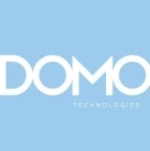It provides every feature you're looking for to perform OLAP and OLTP-based transactional and analytical reporting.
We've used it for some time now, and it's an SAP product that gets more and more mature with each new upgrade or version.
There are definitely some areas of improvement (i.e. interface, etc.), just as every product needs improvements to meet changing demands over time.
When you test and find a bug, you raise a ticket with SAP - which gets fixed by support either because you don't know how to apply the features or it gets fixed with the next patch from their product development team. Also, apart from this, every quarter service pack enhancements come onto the market.
We've had no issues with deployment.
We've had no issues with stability.
We've had no issues scaling it for our needs.
















I do not think the integration of Design Studio into Lumira as a second client - Lumira Studio - will add very much that would impress an existing Tableau user. I would be interested to hear what your Tableau users think after they have evaluated this.